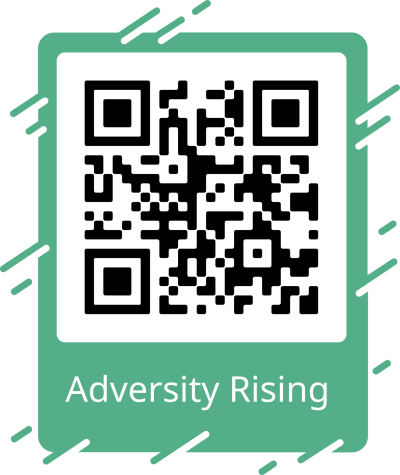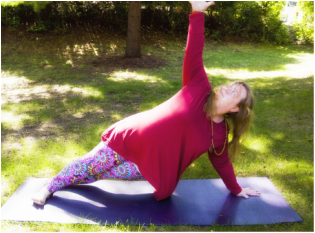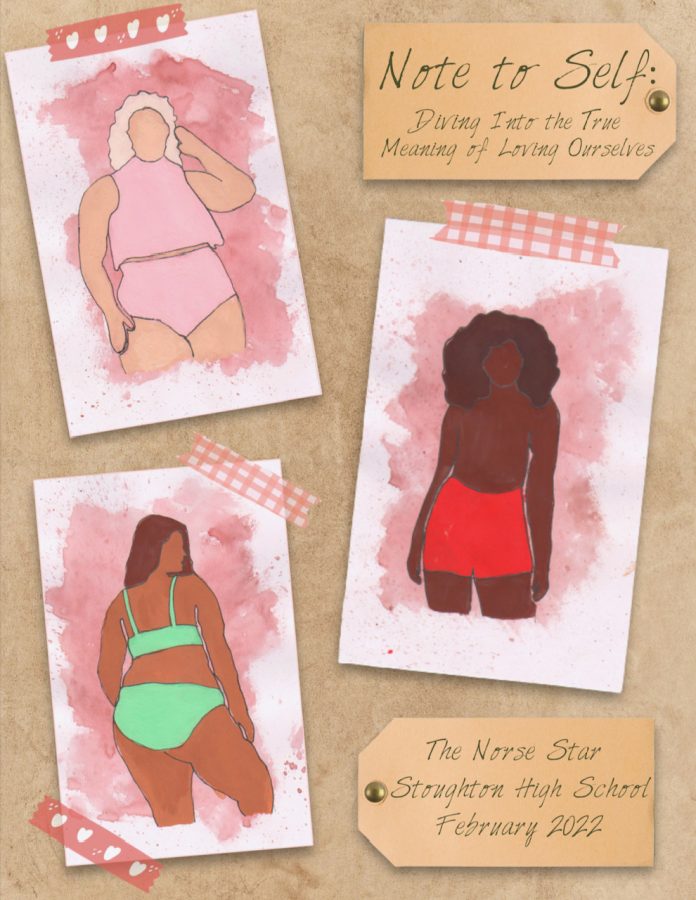Note To Self
As the sun rises on the morning of Feb. 1, the entire world seems to do a quick turnaround from dull winter days into ones filled with love, cheesy Valentine’s Day decorations, and affection for the people surrounding us. Seemingly everywhere we go, there’s a motif of love and care. It’s in the heart decorations adorning the shops along Main Street, in the exchange of gifts between friends and lovers, and even in mundane matters such as trips to the local Walmart or Pick n’ Save. It’s true, the so-called “month of love” unabashedly takes over the country, leading people to examine their relationships with others, whether those be romantic, platonic, or familial. However, a certain type of love often fails to escape our minds when we think about who we should be focusing on during this time: the love, support, and adoration we give ourselves.
Self-love is not a completely unheard-of concept; it’s common to see influencers on social media preaching self-love, care, and help to their followers through the means of exercise, dieting, and journaling. However, most of these social-media-provided tips only go skin-deep rather than diving into the true meaning of loving ourselves – both body and mind – and how we can achieve this type of love in our lives. It’s time for the world to start understanding the meaning of self-love, its importance, and small ways everybody can work to foster it in their own lives.
The Body is But a Vessel
One of the first and arguably most crucial ways to practice self-love is by familiarizing yourself with your body and learning to love it the way it is. This can be hard for many people to accomplish, especially in today’s culture, where white, thin, smooth, and abled-bodied individuals seem to be considered the societal standard for beauty. Other bodies, such as those inhabited by people of color, disabled individuals, or anyone with a noticeable stomach, get pushed to the backburner, if not ridiculed.
Body positivity is a movement that began in the 60s as a method for people of all shapes, sizes, and colors to find confidence in themselves in a society which had never allowed them to live without shame surrounding their body. Unfortunately, the push was (and continues to be) met with a lot of backlash and resistance, and even today, many individuals with larger or differently-abled bodies are bullied or criticized simply for the way they look.
“[Body positivity is] important because, first of all, it was meant to try to help end dehumanization for fat people. It’s also helpful for everybody because it helps us to learn to love ourselves as we are and not see ourselves in a bad way. And it really helps people’s mental health [while also promoting] body diversity, which I think is super important because not everybody looks one way. It helps us to learn to enjoy our life as we are,” SHS senior Laci McPhee says.
McPhee is a firm advocate for body positivity through an organization called PATCH, which stands for Providers And Teens Communicating for Health. McPhee also uses her social media platforms as a way to speak out against body shaming and promote acceptance for everyone.

“We only have one body,” she says. “And our body is meant to help us to live and grow, not to be changed, fixed or seen as a problem. [Our body] is what it is and it’s beautiful the way it is, and I think that society has made it extremely hard for us to just live.”
Oftentimes it’s hard to instantly switch into a perfectly happy, confident mindset about our bodies. Though it would be nice to live in a world where everyone was proud of their bodies, it can be extremely difficult for many to get past the mental barrier in their minds to do so. McPhee, however, acknowledges a different approach.
“I think that sometimes, people assume that body positivity means that you need to be positive [about] your body, when really I think the movement is more geared towards just trying to learn to accept that this is your body. […] It’s more about acceptance than thinking, ‘Oh my God, I love my body.’ It’s very hard to just [instantly switch] into that mindset. It’s easier to flip into thinking just, ‘My body’s gonna serve me. Nothing more,’” McPhee says.
Anna Kreynin, college student and health advocate, agrees.
“There’s body positivity, body acceptance, [and] body neutrality. I think body positivity has become more about appreciating your body for the things that it allows you to do and the ways that [it] allows you to experience life. I know that ‘body positivity’ doesn’t resonate with everybody, though,” she says. “Some people prefer terms like body neutrality, which is more about feeling neutral about your body, not necessarily as an accessory, but more as [a vessel with which] to go about the world and [experience things] that you like to do.”
Kreynin is a public health major at UW-Madison, and she started medical school this past Fall. Upon entering the program, she began to notice a stark absence of support for people with larger bodies. Delving deeper into the subject, she noticed different patterns of eating disorders, dysphoria, and toxic diet cultures that have all become normalized in today’s society.
“I really think that the vast majority of people have had experience with [insecurity about their bodies]. To me, it almost seems like a public health issue. I think that so many people are dealing with struggles regarding the way their body looks, and it doesn’t really feel like it’s brought up as a health issue. I don’t think it’s brought up how it can impact somebody’s mental health, even if you don’t see it. We talk about so many other health issues […] but we never talk about how having body image issues, having negative feelings toward your body, or having negative eating behaviors, really impacts your life on physical, mental, and social levels,” Kreynin says.
Social media creators have begun to speak out against fatphobia and discrimination against different weights, to either side of the scale. This advocacy has been met with mixed reactions–some supporting the movement, and others being quick to oppose it.
“Creators with larger bodies get a lot of really negative comments, especially with regards to health. People [will comment things like] ‘You’re glorifying obesity,’ or ‘You’re promoting an unhealthy lifestyle’ which is ridiculous. They’re finding confidence in their bodies, which is beautiful,” Kreynin says.
McPhee chalks this discrimination up to simple ignorance, taught to us by a civilization geared towards establishing only one body type as acceptable.
“We have had a lack of education on fat-phobia and fat-discrimination, […] and that’s where we’ve learned to not like ourselves the way that we are. So I think once we learn and educate others on the topic, hopefully, things will change,” she says.
Unfortunately, with how far the body positivity movement has progressed, it has also devolved into largely supporting female figures, while skipping over male-presenting or identifying people.
“It’s kind of sad because I think [body acceptance] should be for everyone. Like no matter what gender or sexuality they identify with, no matter what their body looks like, it is a movement that should be for everyone. […] I think that over the years [the movement has] changed to view only female [or female presenting] people, and that’s wrong. It should really just be applicable to anyone with a body,” McPhee says.
One last area both Kreynin and McPhee touch on is the amount of unknown privilege people with a “perfect” body have in many areas of their lives.
“If you’re bigger and you walk into a room, the way that people view you versus someone who’s not [bigger] is so different. It should be the same, but it’s not. There’s multiple areas – like the entertainment world, the modeling world, the healthcare system, even our education system – where [society] could be treating everyone with the same respect, but we still lack that basic human decency,” McPhee says.
Kreynin agrees, saying, “It can be so hard for people under or over a certain weight to find things like seating that accommodates them, or clothes that fit them that they can actually buy in a mall, instead of on a sketchy website. People at [a lower] weight mark have an incredible amount of privilege, and it’s not talked about.”
Society has fostered the idea that a certain body is the only acceptable one to have. Female-presenting individuals “have” to have flat stomachs, large chests, and toned legs, and male-identifying people “must” have washboard abs, buff arms, and broad shoulders. To look otherwise is often viewed as indecent or unhealthy. However, as Kreynin und McPhee point out, this simply is not true. Bodies come in all shapes and sizes, and that is completely okay. At the end of the day, our bodies are nothing more than a vessel, a receptacle meant to keep our brain, heart, and soul safe. Nothing else matters.
“If you have a negative relationship with your body, with food, with exercise, or anything like that, it’s important to know that you are valid, and you deserve help if you wish to seek it,” Kreynin says. “A major misconception is ‘My relationship with food [or] the way I view my body isn’t bad enough to deserve help,’ but really, everyone deserves that aid, no matter what. It’s not your fault society messed up your perception of yourself, you know? You are handsome, you are beautiful, you are perfect, and it’s past time to end this cycle.”
Mental Health is Meant for All

It’s no secret that students need a break from the multitude of things they do throughout the day. From school, to work, sports, and homework, there doesn’t seem to be enough hours in the day to do everything. The constant running around that students have to do accumulates a lot of stress. When that stress gets too much to handle, we break down, and resort to things that can end up hurting ourselves or others.
Most students have become good friends with burnout throughout high school, for some it has become their best friend. But high schoolers don’t need to be so close to being as burnt out as we are. Kyria Wackett is a licensed mental health therapist and runs her own business called “Adversity Rising,” a website where she shares ways to better one’s mental health. Wackett describes what burnout is and how to move on from it.
“Burnout is an accumulation of stress that hasn’t been dealt with […]. For people to deal with things effectively, you don’t just get rid of the stressor and [burnout is] gone. […] You still feel burnt out because the stress is what’s lingering. What we know is that the most effective way to deal with [burnout] on a daily basis is to find opportunities to move through pain,” Wackett says.

Dealing with common stressors throughout your day can be difficult to manage, and some students have no way of figuring out how to deal with these stressors. Wackett shared one way she thinks people can move on from their emotions. “Crying […] is one of the best releases. It’s an innate response,” Wackett says. “Babies cry all the time. That’s how they get through and move through emotion cycles. The sooner we embrace [our emotions], the sooner we move through them.”
For teens, emotions can be a difficult topic to broach, but it doesn’t have to be that way. Talking about how we feel and talking to other people our age can help break the stigma of mental health. Conversing with those our age about our mental health is a huge step in figuring out how to help ourselves, however many teens feel the need to compare mental struggles against their peers.
“Step one, stop comparing and give yourself the opportunity to say my suffering does deserve space. […] Then I think the final piece would be [to] talk to somebody. I specifically think therapy is helpful, because when you leave, you can leave it there. […] There’s a degree of certainty of knowing that that container is held for you,” Wackett says.
High school is a difficult time for students. Between getting all A’s in school to being a part of as many sports and clubs as possible, there isn’t enough time to get it all done. Students tend to compare their achievements to the peers around them, which can harm their mental health instead of helping. Wackett says the best way to stop comparing ourselves is to question the reasoning behind the things we do.
“I think in particular for high school students, there is […] this comparison piece of having to do it all, be it all, and there’s a lot of pressure on you to be adults,” Wackett says. “Get curious about why we’re doing the things we’re doing and who we’re doing them for. Are we doing them to meet other people’s expectations? Are we doing them because we’re avoiding? [Or] are we doing it because it’s ultimately what’s best for us.”
So, how do students focus on their mental health? Wackett says recognizing when burnout is about to happen is the best way to stop ourselves from those huge break downs. Taking a day off before the problem gets too out of hand tends to help people in the long run.
“I absolutely think people need to take days off when they recognize [burnout]. My suggestion typically is, if you think about in the last six months, on a scale of one to 10 – 10 being the most distressing day you’ve ever had in the last six months – when you get to a six or seven […] that’s when we need the break. We take the break before it gets to the point where you feel like you want to collapse, [when] you’re about to hit the hill,” Wackett says.
Throughout this pandemic we have seen how our mental status can affect us. Kristine Schoen, Stoughton High School’s psychologist, shared some of the things she has noticed in students who have struggled mentally throughout the pandemic.
“Many [students] have experienced feelings of isolation, difficulty with focus, and significant stress,” Schoen says.
Mental health affects us all. We have to take care of our brains to take care of our bodies, and the first step is recognizing our need for rest. Wackett wrapped up the human need for mental health perfectly.
“We all have mental health, and [mental health is] a spectrum and a continuum of an experience. There are very few people that exist at the 1% or the 100%,” Wackett says.
Staying Aware of Self-Care
Drink water, eat “healthily,” get moving, sleep well, and for goodness sake, put down that phone. These are what much of the world knows to be the golden rules of self-care. Such tips are plastered on self-help sites and stress-management resources all over the internet, and even in medical settings.
It’s true, following such advice might make one feel a bit better day to day… but are these always the most accessible forms of self-care? Sometimes, these repetitive slogans can make many of us feel scolded and practically guilty for not partaking, for whatever personal reason that may be. What about those whose personal situations, schedules, and stressful lives negate their ability to adhere to such tips? It shouldn’t be much of a news flash that those individuals deserve self-care too.
Luckily, there are many alternative, and often more accessible, ways to practice self-care in one’s day-to-day life, regardless of inhibiting circumstances. It merely comes down to finding what works best for each person individually. One of the more customizable – in fact, one might even say flexible – ways to take care of oneself is through the practice of yoga. While it might sometimes seem intimidating, yoga, meditation, and mindfulness are self-focused activities that anyone can partake in in any capacity.
Valerie Hesslink, a full-time yoga instructor and educator whose Madison-based body-inclusive yoga practice works to help individuals realize how this form of movement can benefit them, and helps them to understand that regardless of their size or situation, there’s a space for them in yoga.
“There’s a way in which yoga brings intention and purpose into how we move our body [and] how we breathe, and a lot of times that can impact and service our body [and nervous system],” Hesslink says. “[I know that] yoga can be sometimes intimidating. Like, ‘Oh, I gotta get spiritually centered, and if I’m not levitating above my mat by the end of the practice, I’m not a good yogi’. But [instead I can start with] ‘let me stand on my mat, move my body a little bit, and hopefully feel better afterwards.'”

Hesslink touches on an important note to remember about self-care: it can look different for each person. Rather than attempting to master whichever vessel one uses for self-care, we should instead focus on getting the most out of it for ourselves, even if that means mistakes, inconsistency, or amateurism.
Sometimes, trying to focus on what is causing stress or struggle in our lives can be wholly overwhelming. Instead of attempting to solve stress by going directly to the source (which can open up the door for negative self-talk if one fails to get to the root of the problem and solve it) one might find more success in relocating focus to something that is easier to control and be consistent with, such as yoga or meditation.
“[I find that] if you show up on your yoga mat, you show up for life […] Yoga, I feel like, helps you return home. And that’s where I think self care comes in. [Yoga and meditation provide you with] tools to acknowledge that you’re experiencing something and to also, hopefully, change it if you need to,” Hesslink says.
It is also important to recognize that self-care is a vast term and looks different for everybody. Some find that moving their bodies – such as through yoga, working out, or going on walks – helps slow down their mind. Others find that being active can actually have a negative (or even triggering) effect when they’re struggling mentally or feeling burnt out.
Self-care is not a one-size-fits-all concept. What might help one individual decompress might have the opposite effect on somebody else. In an effort to shine a light on a wider range of self-care methods, students were asked to share the ones they like to use, and their responses certainly demonstrate just how many diverse and unique possibilities there are.
How do you practice self care?
Eddy Kemppainen (12): “Bake and watch comfort shows”
Eliana Thomson (10): “I really love to read, it helps me escape when my mind feels overwhelmed and overworked. [I also spend] time with my cats to take a break and rid myself of stress or negativity.”
Brooke Thrall (12): “I workout!”
Ava Mueller (9): “I turn on my cute little lights, light candles, bury myself in blankets, and read, or watch Netflix.”
Helena Kohlhoff (11): “Every Sunday I paint while watching a TV show.”
Rowan Gunnink (11): “I like to read poem books in coffee shops!”
Final Notes
After conversations with five experts in their areas of work and/or activism, a few vital things have become clear:
1. Everybody, and thus every body is deserving of and worthy of love. If body-focused love is a bit too difficult a goal to aim for, it’s important that we realize our bodies at least deserve mental neutrality. Bodies don’t exist to fit molds. They exist to carry us through life and all its joys.
2. Mental health is far more than extremes. Between 0 and 100 exists a grey area in which most of us reside. Each of us have our own journey with mental health and have had different success rates with managing it. To compare our own struggles to others’ is unfair to ourselves. Pain is relative, and at the end of the day, pain is pain. We sometimes must accept that we’re not okay before we can begin to amend whatever plagues us, be it exhaustion, stressors, grief, or any number of life-related aches.
3. There is no such thing as a correct form of self-care. What’s important is that we all give ourselves the grace to engage in it. For some, self-care takes the form of exercise. For others, it exists in creative forms of expression. Sometimes, it might even be as simple as sleep. Regardless of which self-care method works for each of us, the important thing to remember is that we all deserve it. Self-care is not selfish. It is simply how we get through.

Senior Autumn Evenson is the Norse Stars distribution manager as well as a staff writer. Autumn's favorite part of Norse Star is the atmosphere.
Outside...

Clare Borchardt is the Norse Star's Copy Editor as well as a staff writer. Clare appreciates how the Norse Star is student-led and the amount of collaboration...






